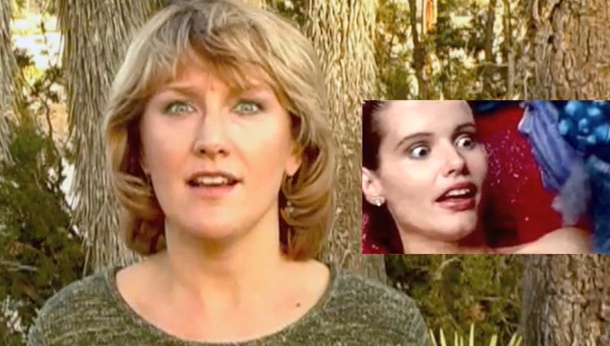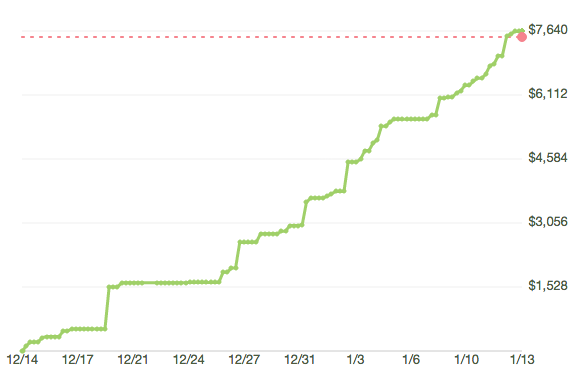This is #3 of a three part series about how you can have what most would call a “bad looking video” and still have a successful Kickstarter project. (If you missed it, I previously wrote about this idea here and here.)
What does this mean for you?
You don’t have to sweat the video (as much as you might think)!
We’ve asked hundreds of project creators what the hardest parts of launching their Kickstarter project were.
The thing we hear the most is that determining what the video should be and then figuring out how to actually film it is almos a deal breaker for many people.
This made me think: How many people don’t even get around to launching because the video production element is just too daunting? After all, lesser things have caused us to procrastinate, right?
This Video Sorta Sucks, But Who Cares!
Man oh man! The zooms, jump cuts, weird transitions and oddities galore…this video is just plain weird and TOTALLY distracting from the objective of clear, straight forward communication!
But guess what, Dana crushed her goal without a problem.
How is this possible? Simple, Dana is a friendly, sincere, passionate person who gave us the backstory, the mission at hand, and the call to action.
If you close your eyes, you’d consider this clear communication!
Most importantly, though, is that she had a strong Circle of Influence and a Rewards Matrix that maximized her fundraising potential.
As we learn from our interview with Dana, she put a lot of work into get the right takes when she recorded her video. She re recorded until she knew that she was being herself in front of the camera. She focused on the important parts of video creation![hr]
Focus on Your Rewards Matrix for Maximum Kickstarter Results
If your personal connections exist and you maximize your communication strategy with these people, your Rewards Matrix is where you should focus your attention next. A crappy video hardly ever appears to be the cause of a failed Kickstarter yet it seems to cause the most stress and take the most time for project creators.
(Kickstarter Graph courtesy of now-defunct CanHeKick.it)
Here’s Dana’s Kickstarter Backed Rewards Breakdown:
- $5 – “high five” (2 backers – $10)
- $10 – Digital (14 backers – $140)
- $25 – Signed CD (16 backers – $400)
- $30 – Personal Message + CD (6 backers – $180)
- $45 – CD x2 (2 backers – $90)
- $50 – Handwritten Lyrics (12 backers – $600)
- $100 – Custom Shirt (12 backers – $1200)
- $150 – Custom Art (1 backer – $150)
- $200 – Gourmet Dinner (4 backer – $800)
- $600 – Original Painting (1 backer – $600)
- $700 – Private Show (1 backer – $700)
TOTAL: 71 Backers Pledged $4,870 – of 16 rewards, only 11 received pledges
This shows us that 18 pledges didn’t select a reward and that this project received $2770 in over pledges or backers who didn’t select a reward. In other words, someone selects the $40 level but gives $100 or someone gives $200 but doesn’t want a reward.
The Takeaway
Dana is the perfect example of how people don’t contribute to a ‘project’ they contribute to a person. If you keep this one thing in mind when you’re in the thick of frustration and decision making, It’ll serve as your North Star.
Our Interview with Dana
Levi – I’m very impressed by your rewards array. It’s simple yet well thought out. How did you go about planning these? Do you have any rewards suggestions (or any advice, for that matter) for artists who are planning their project?
I piled through other kickstarter projects for ideas, then brain stormed all things unique to my project that I could reasonably offer. Then I studied market prices for those things so that my prices would be appropriate.
Also, I was careful not to go too crazy on the rewards offered. I wanted to be able to fulfill those rewards while staying focused on the main goal of recording excellent music.
Levi – How many people are on your mailing list and how did you use it for your Kickstarter project? Would you say most of your pledges were from your mailing list or friends and family?
My mailing list is mostly on facebook, though I use my email account for some people who don’t fb. I also have close friends who sent my project to everyone on their mailing lists, and all of us urged our collective connections, (approximately 1,500 people total), to share it with their connections, (untold number!).
I did two local radio interviews, one of them a short story, the other an hour long live interview, about my project and my music. Also, I approached the local newspaper with a story about ‘local musician DIY album of original songs’ and they contacted me and ran a story about my kickstarter campaign.
I did live performances as well, and promoted my kickstarter to my audience. I used these promotions a second time by posting the links in my ‘updates’. That kept me fresh in people’s minds, while keeping the content fresh as well. Then, finally, I hosted a major event on the last day, which created a lot of excitement and gave me the last push I needed to succeed.
Levi – How did you approach making your video?
When I filmed my project video, I was nervous at first, and it came across. So I videoed it again the next day, and the next day, and the next, until I was comfortable and sounded like myself. After all, I’m wonderful, and I’m worth it, so what do I have to worry about? Once that was reflected in my video, I knew I was set.
All the while I created my project, I wobbled on actually launching it because I was iffy about ‘asking people for money’. At end of the list of ‘kickstarter school’s to-do-list’ is – pledge another project, to find out for myself what the experience was all about. Am I glad I did!
A kind of magic occurred once I pledged. I felt a personal connection to the band and felt good contributing to their dreams coming true and getting their product. I realized then that kickstarter is not just about ‘asking for money’, it’s about offering an experience.
I had read this before, but once I backed a band I really liked, I fully understood the meaning. I’m so excited for them, I couldn’t wait to offer this experience to my fans. Feedback from my backers has shown me that I succeeded in providing this for them, and I couldn’t be happier.
Lastly, I treated my kickstarter project like a full-time job. Every day for months, I worked towards launching it. I spent more time planning my video and editing it than I did filming. Whether it was reading kickstarter school, or interviewing professionals, or corresponding with fans, I didn’t stop working.


Hey, thanks for the article.
We are a streaming media company, who help artists to raise money through crowdfunding, do the pr and get them sponsorship. So that they can set up a live gig online for all their fans without the money having to come from their own pocket. Have you got any advice for us?
dig the article. Can you use a cover song, that you have recorded and released in iTunes. in the actual crowd funding video?
ezra, sorry i missed this comment. did you get my reply via email? and for anybody else… if you own the recording, you won’t have a problem with that, but you’ll still owe the songwriter/publisher mechanical royalties as required by law. if you haven’t paid or created an arrangement with the publisher, they may ask you to take down the video or to pay some $$$.